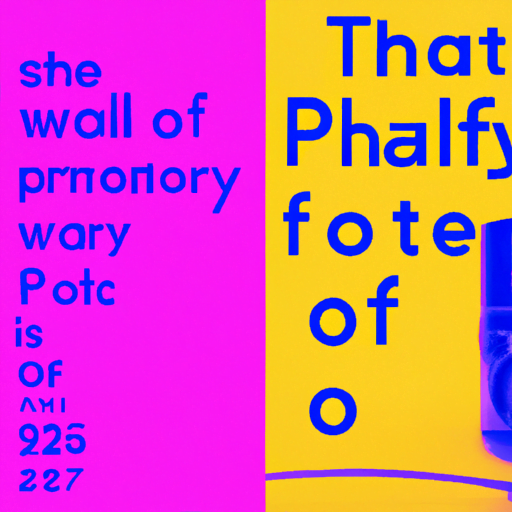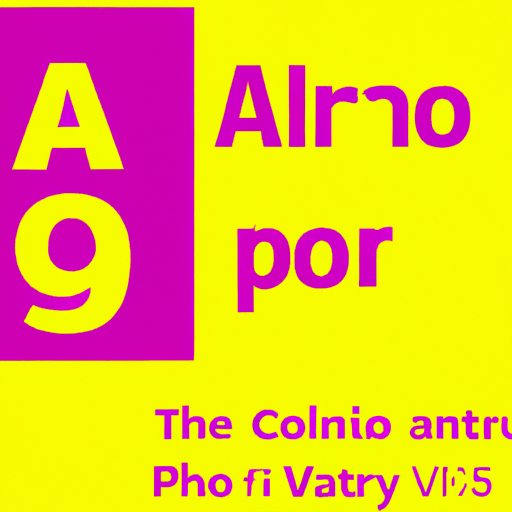
-
Table of Contents
Exploring Variable Fonts: The Future of Typography

Typography plays a crucial role in design, communication, and user experience. It sets the tone, conveys emotions, and enhances readability. Over the years, typography has evolved from traditional print to digital formats, and now, we are witnessing the rise of variable fonts. Variable fonts are a game-changer in the world of typography, offering designers unprecedented flexibility and control. In this article, we will explore the concept of variable fonts, their benefits, and their potential impact on the future of typography.
What are Variable Fonts?
Variable fonts are a new type of font format that allows for the interpolation of multiple font styles within a single file. Unlike traditional fonts that come in fixed styles (e.g., regular, bold, italic), variable fonts offer a continuous spectrum of styles that can be adjusted dynamically. This means that designers can fine-tune various attributes of the font, such as weight, width, slant, and even optical size, to create a wide range of typographic variations.
Variable fonts are built using OpenType Font Variations technology, which is an extension of the OpenType font format. This technology enables the creation of a single font file that contains all the necessary data to generate different styles. The font file includes a set of design axes, which are the parameters that define the variations available in the font. Designers can then use these axes to manipulate the font and achieve the desired typographic effects.
The Benefits of Variable Fonts
Variable fonts offer several advantages over traditional fonts, making them a powerful tool for designers. Here are some of the key benefits:
- Flexibility: Variable fonts provide designers with unparalleled flexibility. They can easily adjust the weight, width, and other attributes of the font to fit different design contexts. This flexibility allows for more creative freedom and enables designers to create unique typographic experiences.
- File Size Reduction: Variable fonts can significantly reduce file sizes compared to using multiple static font files. This is because all the variations are stored within a single font file, eliminating the need to load multiple files. Smaller file sizes lead to faster loading times, which is crucial for web and mobile applications.
- Improved Performance: With variable fonts, designers can optimize typographic performance by dynamically adjusting the font based on the user’s device, screen size, and other factors. This ensures optimal legibility and readability across different platforms and devices.
- Responsive Design: Variable fonts are particularly well-suited for responsive design. Designers can use the font’s axes to create fluid typography that adapts seamlessly to different screen sizes and orientations. This helps maintain consistency and readability across various devices.
- Accessibility: Variable fonts have the potential to enhance accessibility by allowing users to customize the typography according to their preferences. Users with visual impairments, for example, can adjust the font size, weight, or spacing to improve readability.
Real-World Examples
Several notable examples demonstrate the power and versatility of variable fonts. Let’s explore a few:
IBM Plex
IBM Plex is a variable font designed by Mike Abbink and Bold Monday. It offers a wide range of styles, from thin to extra-bold and condensed to expanded. The variable nature of IBM Plex allows designers to fine-tune the font to match the specific requirements of different design projects. This flexibility makes IBM Plex a popular choice for branding, editorial design, and digital interfaces.
Decovar
Decovar is a variable font created by David Berlow of Type Network. It showcases the potential of variable fonts for decorative and display typography. Decovar offers a vast array of design variations, including different shapes, ornaments, and patterns. Designers can manipulate the font’s axes to create intricate and customizable typographic designs, making Decovar a valuable asset for creative projects.
Amstelvar
Amstelvar is a variable font developed by Type Network and Google Fonts. It is based on the classic Amstel typeface and offers a wide range of weight, width, and optical size variations. Amstelvar demonstrates how variable fonts can be used to create versatile and adaptable typography. The font’s axes allow designers to adjust the weight and width dynamically, making it suitable for both display and text settings.
The Future of Typography
Variable fonts have the potential to revolutionize typography and shape the future of design. As more designers and developers embrace this new technology, we can expect to see the following trends:
- Increased Adoption: As variable fonts become more widely supported by design tools and browsers, their adoption will continue to grow. Designers will increasingly leverage the flexibility and performance benefits of variable fonts to create visually stunning and highly functional designs.
- Customization and Personalization: Variable fonts open up new possibilities for customization and personalization. Users will have greater control over the typography they encounter, allowing for a more tailored and inclusive user experience. Designers will need to consider these customization options when designing for diverse audiences.
- Dynamic Typography: With the ability to adjust font attributes dynamically, designers can create typography that responds to user interactions and environmental factors. This dynamic typography can enhance storytelling, improve usability, and create engaging user experiences.
- Collaboration and Innovation: The development of variable fonts has sparked collaboration and innovation within the design community. Designers, type foundries, and developers are working together to push the boundaries of what is possible with variable fonts. This collaborative spirit will continue to drive the evolution of typography.
Conclusion
Variable fonts are a significant advancement in typography, offering designers unprecedented flexibility, performance benefits, and customization options. They have the potential to transform the way we approach typography and design. As variable fonts continue to gain traction and support, we can expect to see a new era of typographic creativity and innovation. Designers should embrace this exciting technology and explore its possibilities to create visually stunning and highly functional designs.
